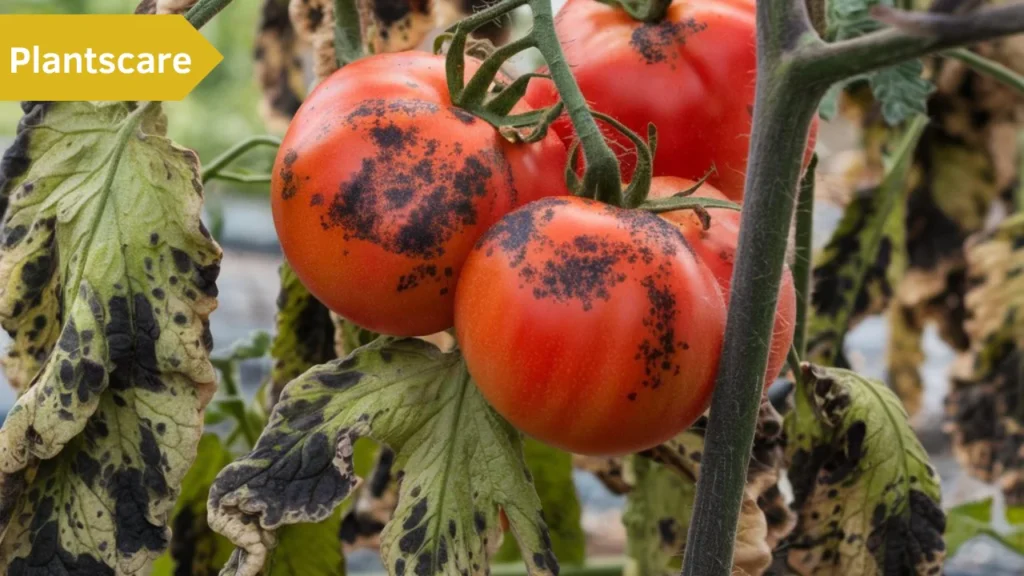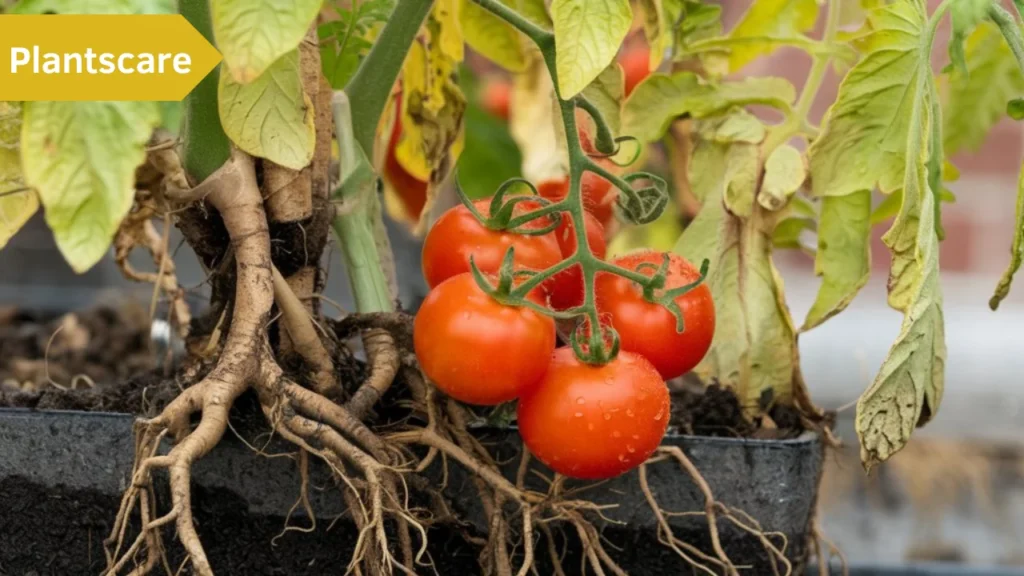Tomato plants are a staple in many home gardens, known for their rich, juicy fruit. But just like any other plant, they require specific care to thrive. From the right amount of water to nutrient-rich soil, there are many factors that contribute to a healthy tomato plant. However, when things go wrong, you might notice that your tomato plant starts to look… off. Recognizing the early signs of distress is crucial to saving your plant from an untimely death. In this article, we cover “Signs of a dying tomato plant” in detail.
The life cycle of tomato plants
Before diving into the signs of a dying tomato plant, it’s essential to recognize their life cycle. Tomato plants generally follow a predictable pattern: germination, growth, flowering, fruiting, and then eventual death. However, sometimes external stressors or diseases can cause premature death, making it vital to recognize the signs of a failing plant.
Why tomato plants may die prematurely
Several factors can lead to the early decline of a tomato plant. Poor watering habits, nutrient deficiencies, pests, and diseases are the main culprits. To prevent these issues, gardeners need to keep an eye on their plants and adjust care routines accordingly. But first, let’s dive into the signs that indicate your tomato plant is in trouble.
Top signs your tomato plant is dying
Wilting leaves
Wilting is often the first and most visible sign of a distressed tomato plant.
Causes of leaf wilting
Leaf wilting can be caused by both under and overwatering. If the plant lacks sufficient moisture, the leaves begin to droop and lose their vibrant green color. On the other hand, overwatering can drown the roots, making it difficult for the plant to absorb oxygen, leading to wilting.
Solutions for wilting
If under-watering is the issue, increase the frequency but make sure not to flood the soil. For overwatering, allow the soil to dry out before your next watering session. Consider using well-draining soil and containers.
Yellowing leaves
One of the most common signs of an unhealthy tomato plant is yellowing leaves.
Nutrient deficiency
Yellow leaves often point to a nitrogen deficiency or a lack of essential nutrients. This problem can be resolved by applying a balanced fertilizer that provides nitrogen, phosphorus, and potassium.
Overwatering effects
Yellowing leaves can also be a result of too much water. Overwatered plants often have soggy, poorly aerated roots, making it harder for them to absorb necessary nutrients.
Browning or crispy leaves
If the leaves are browning at the edges or becoming crispy, this can indicate sunscald or underwatering. Make sure your plant has enough shade during the hottest parts of the day and monitor your watering schedule to avoid dehydration.
Lack of fruit production
A healthy tomato plant should produce plenty of fruit. If you notice that the flowers are dropping or the plant isn’t bearing fruit, there could be several reasons.
Pollination Problems
Tomato plants rely on pollinators like bees. Without sufficient pollination, flowers may drop prematurely.
Lack of Sunlight
Tomato plants need at least 6-8 hours of sunlight daily. Insufficient sunlight can cause stunted fruit growth or complete failure to produce fruit.
Black or dark spots on leaves
Black spots on tomato leaves are usually a sign of disease or pest infestations.
Fungal infections
Diseases like early blight and Septoria leaf spot are common causes of dark spots on tomato leaves. These illnesses spread quickly if left untreated and do best in damp environments.
Pest infestations
Pests like aphids and whiteflies can also cause dark spots on the leaves. These insects weaken the plant by feeding on its sap, leading to eventual death if left unchecked.
Root rot: A silent killer
Root rot is one of the most devastating conditions for a tomato plant because it’s often invisible until it’s too late.
Identifying root rot
Soil drainage issues and excessive watering are the usual causes of root rot. Signs include yellowing leaves, stunted growth, and a foul odor from the soil.
How to prevent root rot
To avoid root rot, ensure your tomato plants are in well-draining soil and containers. It’s also essential to water only when the top inch of the soil feels dry.
Stunted growth: Why isn’t my Tomato plant growing?
If your tomato plant isn’t growing as expected, it could be due to poor soil quality, lack of nutrients, or insufficient sunlight. Regularly fertilize your plants and ensure they get enough light to encourage healthy growth.
Common diseases affecting tomato plants

Early blight
Early blight is a fungal disease that causes brown lesions on leaves and stems, leading to a weakened plant structure. It frequently happens in humid, damp weather.
Late blight
Late blight is another fungal disease that can wipe out an entire tomato crop if left unchecked. It presents as large, dark spots on leaves and can quickly spread through the plant.
Pests: The tiny assassins
Aphids and their impact
Aphids are tiny insects that suck the sap from tomato plants, weakening them over time. They often gather on the undersides of leaves, causing them to curl and yellow.
Whiteflies and tomato plant decline
Whiteflies are another common pest that can rapidly infest a tomato plant. Like aphids, they feed on the plant’s sap, causing a decline in its health.
Environmental stressors: Too hot, too cold
Tomato plants are sensitive to extreme temperatures. If it’s too hot, the plant may wilt or experience sunscald. If it’s too cold, the plant might not grow properly or produce fruit.
Watering issues: How much is too much?
Tomato plants thrive with consistent watering, but too much or too little water can lead to various problems like root rot, yellowing leaves, and fruit cracking. Water deeply and ensure proper drainage to maintain a healthy balance.
The Vitality of Plants Depends on Soil Health
Testing your soil
A simple soil test can reveal imbalances in nutrients or pH levels that might be affecting your tomato plant’s health. The majority of garden centers carry test kits.
Using organic fertilizers
Organic fertilizers improve soil structure and provide essential nutrients for tomato plants without harmful chemicals. Compost or manure works well to boost plant vitality.
How to revive a dying tomato plant
Pruning dead or dying Leaves
Regularly prune away any dead or yellowing leaves to improve air circulation and prevent disease.
Adjusting watering habits
Examine your watering habits. Adjust the frequency to ensure the plant isn’t being overwatered or left too dry for extended periods.
Applying correct fertilizers
A slow-release fertilizer can work wonders for reviving a nutrient-deficient tomato plant. Make sure the fertilizer is rich in nitrogen, potassium, and phosphorus.
When it’s time to say goodbye
Sometimes, despite your best efforts, a tomato plant may not recover. If disease or pests have taken over, it might be time to remove the plant to protect the rest of your garden.

Conclusion
Tomato plants can be surprisingly resilient, but they do need attentive care. By learning to recognize the early warning signs of distress, you can intervene before it’s too late. Whether it’s wilting leaves, nutrient deficiencies, or pests, there are always solutions that can restore your plant to health.
FAQs
If my tomato plant is overwatered, how can I tell?
Overwatered tomato plants often have yellowing leaves, soggy soil, and may develop root rot .Make sure the ground dries out in between irrigations.
What causes black spots on tomato leaves?
Black spots are typically caused by fungal diseases or pest infestations. Applying fungicide and keeping the plant dry can help prevent the spread.
Can a dying tomato plant be revived?
In many cases, yes! Adjusting watering, pruning dead leaves, and adding fertilizer can often bring a dying tomato plant back to life.
Why are my tomato flowers dropping without producing fruit?
Lack of pollination, insufficient sunlight, or high temperatures may cause flowers to drop without producing fruit.
What pests are most harmful to tomato plants?
Aphids, whiteflies, and spider mites are common pests that can significantly damage tomato plants by feeding on their sap.